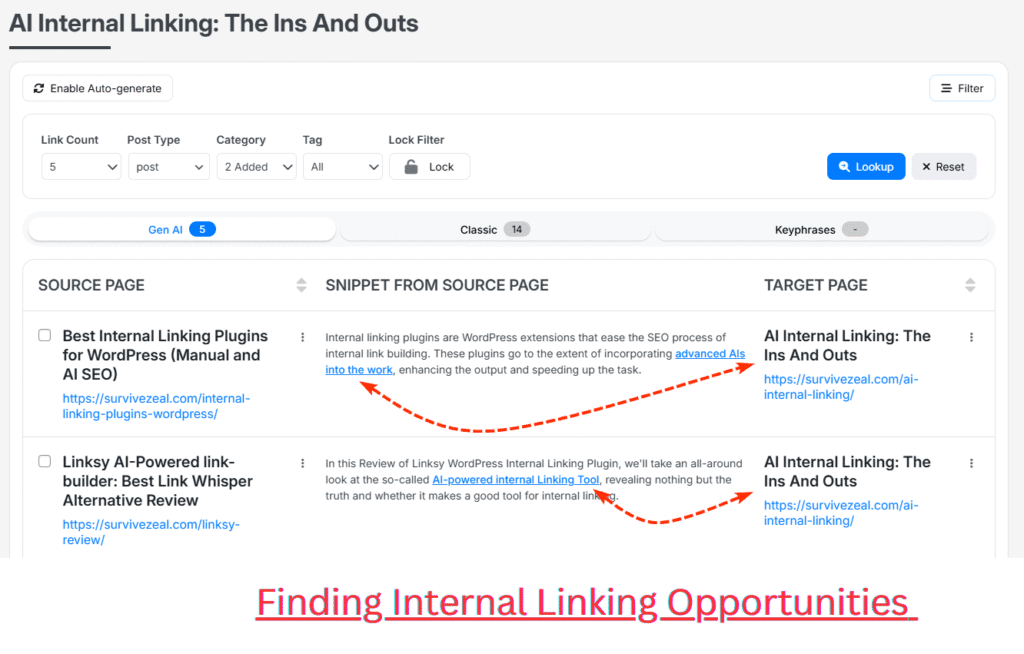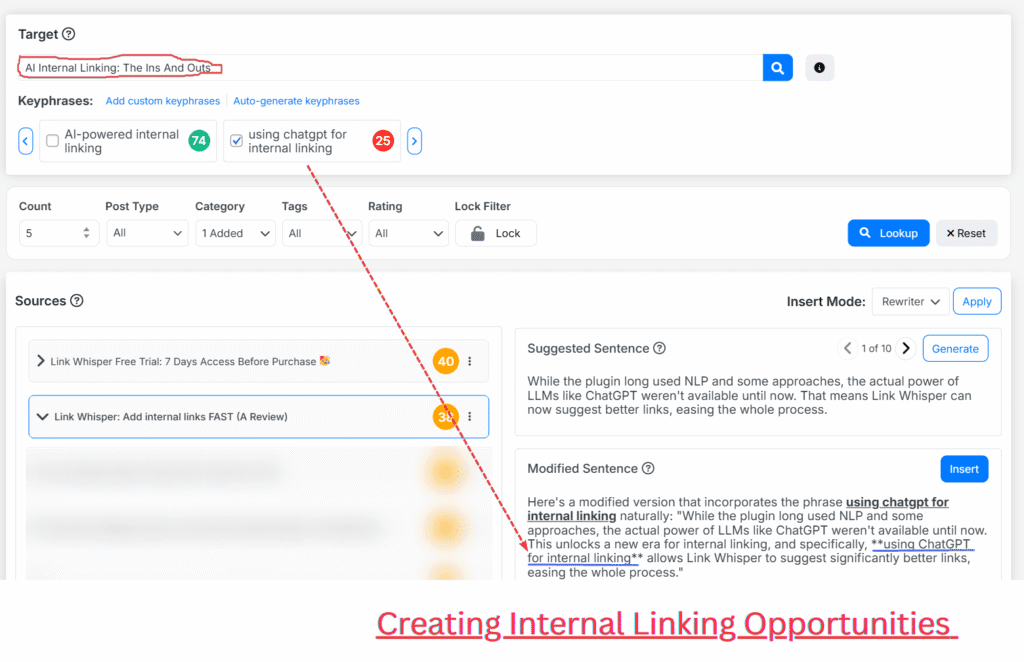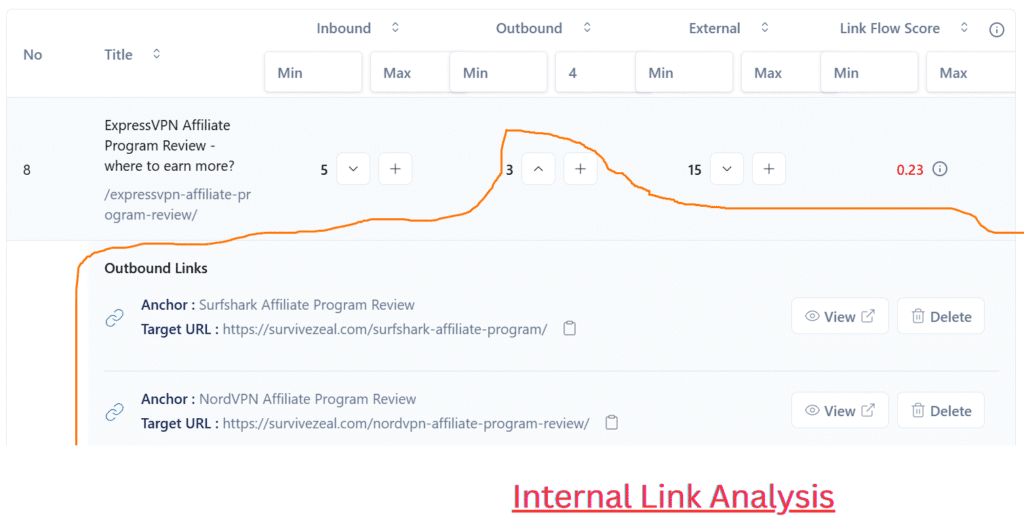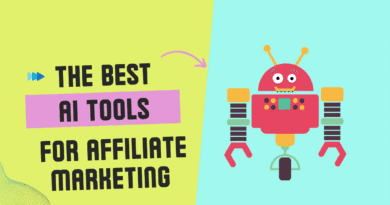AI Internal Linking: The Ins And Outs
For a long time, internal linking has been stressful and time-consuming. Despite all efforts, we couldn’t fully escape the hard parts of it. But with the power of artificial intelligence, especially AI-driven internal linking, the story has changed.
Unlike traditional internal linking that relied on basic AI or less advanced technology, today’s AI internal linking uses large language models. This has brought greater abilities and far better results.
What Is AI Internal Linking
AI Internal Linking simply means using the power of artificial intelligence to automate internal linking. It’s one of the main ways to carry out internal linking automation — and right now, it stands out as the best.
Technologies like Natural Language Processing (NLP), Machine Learning (ML), and Large Language Models (LLMs) are behind it. Thanks to these advanced AI systems, AI Internal Linking is not just effective — it’s leading the way.
AI Internal Linking as the best way to automate internal linking
As mentioned earlier, AI internal linking has proven to be the best way to create internal links on WordPress automatically. Unlike traditional internal linking automation that relies on basic AI and outdated technologies, AI internal linking taps into the power of large language models to suggest highly relevant linking opportunities.
What am I trying to say? The relevancy of the suggested internal links in AI internal linking is way better — like 70 times better — than with other approaches.
Another reason AI internal linking stands out is its ability to fully automate certain tasks without sacrificing quality, especially when it comes to target keyword generation. Traditional internal linking tools, which often integrate with Google Search Console, RankMath, and other SEO plugins, try to pull target keywords (also known as focus keywords) — but honestly, what they bring to the table is often not enough. I’ve seen it myself, and many others have too: you still end up having to enter a lot of target keywords manually.
But AI changes the game. AI can actually read and understand the meaning of all your pages and automatically generate target keywords for you — and it does this without dropping the quality one bit.
Another big reason AI internal linking is better is its ability to truly automate internal linking — and no, I’m not talking about basic keyword-based linking, where tools simply turn keywords into links. That’s automation, yes, but it’s not the same as what AI brings to the table.
Let me go straight to the point: with AI, you get bulk linking. AI uses its intelligence to find all your relevant, unlinked pages, match them together (like post A linking to post B, post B linking to post C), and then — here’s the magic — it creates new sections inside these articles where the links naturally fit. Those new sections contain linkable opportunities, and the AI turns them into internal links seamlessly.
In other words, AI internal linking doesn’t just suggest opportunities — it creates them.
How to use the power of AI for Internal Linking
- Finding internal linking opportunities
- Creating internal linking opportunities
- Bulk linking
- Target keywords generation
- Internal Link Analysis
- Link visualization
Finding internal linking opportunities

AI can help you find internal linking opportunities in both your existing content and any new content you are writing.
Let’s come a bit closer to the idea:
Whenever you publish a new page on your site, by default, that page stands alone.
The only way to properly connect it is to visit your older pages, look for places where you can create links, highlight the text, and manually insert links to the new page.
This process is very time-consuming. You have to scan through all your pages one after the other, carefully searching for opportunities.
But with the power of AI, this heavy load is lifted.
AI can automatically scan your older pages while you focus on other important tasks. It picks out internal linking opportunities for you.
And once the opportunities are found, you are given the option to choose which ones you prefer to apply.
Unlike traditional internal linking methods, AI-based suggestions are far better in terms of relevance and accuracy.
They are smarter, faster, and save you a lot of time and stress.
Creating internal linking opportunities

As you know, the leading method before now was simply finding internal linking opportunities. But this method has its own limitations too.
When there is no natural opportunity for internal linking inside your other content — or inside the content you are trying to link from — then you have no other option than to manually visit those pages and try to force something yourself.
This is stressful and time-consuming.
But with internal linking opportunity creation, you can overcome that.
AI can now closely produce something that is truly admirable.
Here’s how it works:
First, AI will go through all of your pages and try to find internal linking opportunities.
If it finds none, then it doesn’t stop there — it deploys its intelligence to create opportunities.
There are several smart ways AI does this:
- It can insert a new section into your article. A common example is adding a new FAQ (Frequently Asked Questions) section. In the FAQs, AI can create a new question and answer where it naturally draws out a linkable phrase.
- It can rewrite an existing sentence that is close to your desired anchor text. By adjusting the wording slightly, it can create a new opportunity without changing the real meaning of your content.
After these smart edits, the constructed linkable phrase will then be automatically turned into an internal link — all done by AI without you needing to lift a finger.
Bulk linking
Bulk linking is very close in method to keyword-based linking — not because they are the same, but because both use full automation.
However, in Bulk linking, artificial intelligence powers everything, and it’s not strictly based on predefined keywords. Here’s how it works:
The AI internal linking tool takes hold of all the pages you provide (or your entire site). It then presents two lists:
- Source pages — these are the pages where links will be placed.
- Target pages — these are the pages that will receive the links.
The AI will intelligently assign related pages to each other. You can choose to guide it by providing target keywords, or you can let the AI handle everything itself.
It scans through your pages, finds internal linking opportunities, and links them automatically.
If it doesn’t find any natural opportunity, the AI will create one — by either rewriting a nearby sentence or adding a linkable phrase in the source page — and then linking it to the target page.
Target keywords generation
Another powerful use case of AI internal linking is target keyword generation.
Of course, traditional methods rely on pulling keyword data from Google Search Console and SEO plugins. But these keywords are sometimes not enough to cover the full scope of your content.
AI internal linking helps you overcome this issue whenever it comes up.
It uses its intelligence to study your entire content deeply, and also study your existing target keywords, whether they came from SEO plugins or from Google Search Console.
Then, almost like doing homework, it writes more related keywords that fit naturally with your content.
Remember, target keywords are like the brain of internal linking tools.
The more target keywords you have, the more chances you have to find strong internal linking opportunities.
AI helps you run and complete this important process with speed and quality.
Internal Link Analysis

The power of AI can also be used in analyzing your internal linking profile.
Specifically, it helps in finding all the links that are placed on a particular page, as well as all the links that are pointing to that page from other pages.
This is a common problem many people face — they cannot easily track or find all the internal links pointing to a specific page.
But with AI internal linking, these links can be quickly and easily uncovered, along with the source pages they are coming from.
To make it even better, internal links can be fully managed right from the dashboard.
You can delete any internal link, edit it, or update it however you want, without stress.
Link visualization

AI can also be used in link visualization.
When AI is included in this process, it makes it much more accurate and efficient in drawing maps that illustrate your internal linking profile clearly.
Link visualization is not limited to just internal links.
It also extends to other links on your site, including external links.
With this feature, you can view a visual sitemap showing your internal links, external links, or both combined in one view.
This graph is very helpful.
It allows you to easily locate offhand pages — pages that are not properly linked to other parts of your site — and gives you a better understanding of your overall linking structure.
AI Internal Linking vs Traditional Internal Link Automation
Here’s how AI internal linking beats traditional link automation:
Better Relevancy
AI internal linking gives you suggestions that are about 70 times better and more relevant compared to the traditional way that only uses basic AI and keyword matching.
Smarter Keyword Generation:
Traditional tools just pull keywords from SEO plugins or Google Search Console. But AI reads your content properly and writes more target keywords by itself — and the quality is still perfect.
Creating Opportunities
Traditional methods only find what already exists. But AI can go further — if it doesn’t see an opportunity, it can create one by adding new sections or rewriting sentences where needed.
Bulk Linking
Instead of just linking keywords, AI connects your unlinked pages together — like Post A linking to Post B, Post B linking to Post C — and it does this in a natural way by inserting sections where necessary.
Easier Management
With AI, you can easily manage your internal links on the dashboard — edit them, delete them, or do anything you want without stress.
In short, AI internal linking is not just about automation. It actually changes the whole process and makes it better.
Conclusion
AI internal linking has really changed the way we do internal linking today.
Before now, internal linking was stressful and time-consuming. Traditional automation tools helped a little, but they were still limited — they mostly used basic AI and simple technologies that could not fully solve the problem.
But now, with the power of AI, especially large language models, internal linking has become smarter and better.
AI doesn’t just suggest links — it finds better opportunities, creates new ones if needed, generates more target keywords, and even manages internal links easily from one dashboard.
When we compare AI internal linking to traditional link automation, the difference is very clear.
AI brings better relevancy, smarter keyword generation, the ability to create linking opportunities, full bulk linking across your site, and easier management of all your links.
In short, AI internal linking doesn’t just save time. It gives you better results. And it is the best way to create internal links automatically right now.
FAQs
What’s AI internal linking?
AI internal linking involves using advanced artificial intelligence to make internal link automation better.
Is AI at a point where it can automate internal linking without issues?
AI internal linking is far better than traditional approaches, but it hasn’t yet reached the point where it can fully automate internal linking without any issues.
However, when it comes to semi-automation — where a human can review or control the process — AI does incredibly well and delivers very intentional results.
AI also handles certain types of full automation, like helping generate additional target keywords, with high quality.
What’s Internal Link Automation?
Internal link automation simply means the act of automating internal linking — whether semi-automated or fully automated.
What’s the best AI Internal Linking Tool?
There’s no one-size-fits-all answer here.
The best AI internal linking tool depends on several factors: the AI engine it uses, the large language model behind it, and the features it offers.
That said, as of now, Link Whisper is considered the best overall. It integrates with OpenAI and delivers a lot of functionality.
What about WordPress internal linking plugins?
WordPress internal linking plugins are tools that run directly inside WordPress to help automate internal linking.
Since they are built into WordPress itself, they eliminate extra costs like needing to directly utilize expensive large language models like OpenAI.
This is why WordPress internal linking plugins are often cheaper compared to standalone internal linking tools that exist outside WordPress.
What of other Internal Linking Tools that contribute value?
There are many internal linking tools out there that bring value in different ways.
Some use AI, some are built as WordPress plugins, and others are standalone online tools.
Some tools focus on one key feature, while others offer an all-in-one solution.
We recommend checking out our detailed guide, Best Internal Linking Tools, to explore all the top options available right now.


